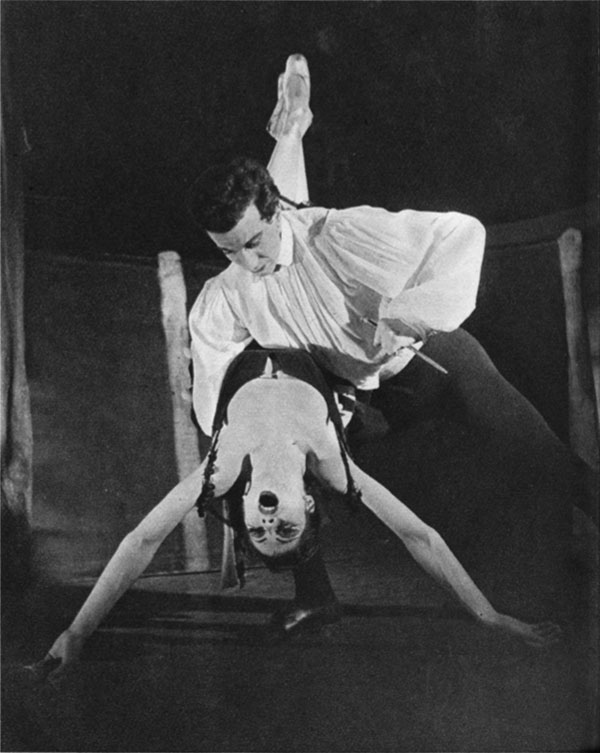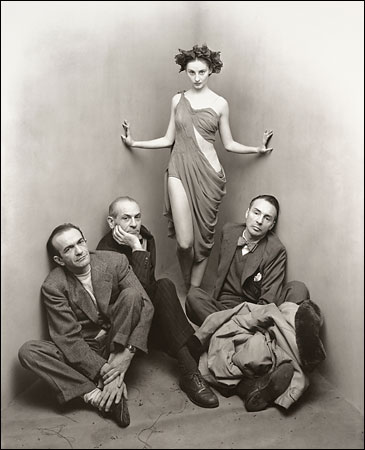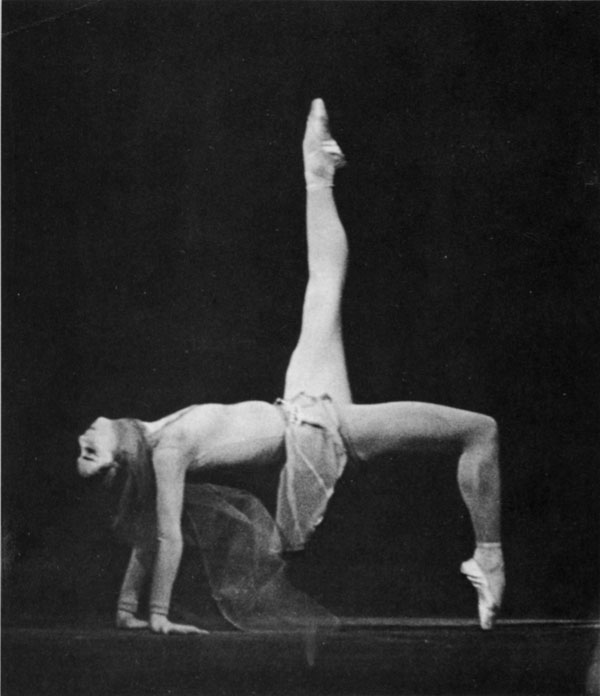Black Swan tribute: erotic intensity at the ballet
Before the Black Swan, the White Swan and the dichotomy between them ever existed, there were pioneering 19th century ballerinas who defined different types in ballet. The most famous is Marie Taglioni, the first to reinforce her ballet slippers and rise up on pointe, creating the impression of floating or flying—a creature of the air, innocent and ethereal. By contrast, Fanny Elssler, rhythmic and flirtatious, was an earthy creature. Critic Théophile Gautier wrote of her performance of the Cachuca dance:
She comes forward in her pink satin basquine trimmed with wide flounces of black lace; her skirt, weighted at the hem, fits tightly over the hips; her slender waist boldly arches and causes the diamond ornament on her bodice to glitter; her leg, smooth as marble, gleams through the frail mesh of her silk stocking; and her little foot at rest seems but to await the signal of the music…
…Now she darts forward; the castanets begin their sonorous clatter. With her hand she shakes down great clusters of rhythm. How she twists, how she bends! What fire! What voluptuousness! What precision!
Her swooning arms toss about her drooping head, her body curves backwards, her white shoulders almost graze the ground. What a charming gesture!
Would you not say that in that hand which seems to skim the dazzling barrier of the footlights, she gathers up all the desires and all the enthusiasm of the spectators?
—Le Diable Boiteux
This is to say that sensuality has been found at the ballet for the past 170 years—at low points ballet troupes served as a sexual marketplace for rich male patrons to select mistresses.
Thankfully the ballerinas pictured below never resorted to prostitution (except for those who danced Kenneth Macmillan’s character Manon). How did they create the sensual impressions that suffused their performances and shine through in photos? Many of them are hyperflexible—their plasticity suggests sexual surrender. The reason some people object to the current fashion, encouraged by choreographer George Balanchine, of extending the legs as high as possible, a feat of athleticism and genetics, is that it gives dance movements the look of sexual acrobatics (especially in certain costumes a high extension pretty much screams “look at my crotch”). I think this criticism is fair if a dancer does it monotonously at every opportunity. The artists here were more nuanced than that and did not only rely on their body type—along with dancing skill they used their eyes, face and theatrical presence to tell a story.
Zizi Jeanmaire
photos from my favorite, Baron at the Ballet
Tanaquil LeClercq
you were always changing into something else
and always will be
always plumage, perfection’s broken heart, wings
and wide eyes in which everything you do
repeats yourself simultaneously and simply
as a window “gives” on something
it seems sometimes as if you were only breathing
and everything happened around you
because when you disappeared in the wings nothing was there
but the motion of some extraordinary happening I hadn’t understood
the superb arc of a question, of a decision about death
—from Ode to Tanaquil LeClercq, Frank O’Hara
Allegra Kent
As a child, I knew I had one great possession: my body. It was little and quick. I lived within it. I looked out of it with my eyes, my irises, and that was also my name, Iris—like the flower, like the rainbow, and like my eyes. I’d wake up in the morning, excited, ready to go out and look at the world. Breakfast would only slow me down. I wanted to leap into the empty lots outside our windows just as soon as I could and see what happened overnight. I’d say to my mother, “I love life!” As an adult, I met people who talked passionately about their new Rolls-Royce. But that isn’t a real possession. All we actually have is our body and its muscles that allow us to be under our own power, to glide in the water, to roll down a hill, and to jump into someone’s arms.
—Once a Dancer… An Autobiography by Allegra Kent
Alla Osipenko
photos from another fantastic book, Great Russian Dancers
Osipenko was especially great in Cleopatra’s solos, unfolding the intricate combinations as a kind of interior monologue, pinpointing the discord between the power of her passion and her keen sense of doom.
The sharp dynamism of Osipenko’s impeccable legs rending the air with a scissorlike movement, the utter tension of every inch of her flexible muscular body, had the impact of a balletic Phaedra. …Osipenko’s tragic heroine represented the fatal force of destructive sensuality.

























Comments
2 Responses to “Black Swan tribute: erotic intensity at the ballet”Trackbacks
Check out what others are saying...[…] Black Swan tribute: erotic intensity at the ballet (synthesthete) […]
[…] Black Swan tribute: erotic intensity at the ballet […]